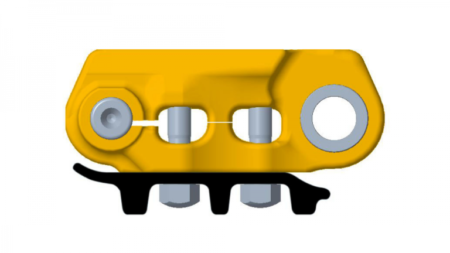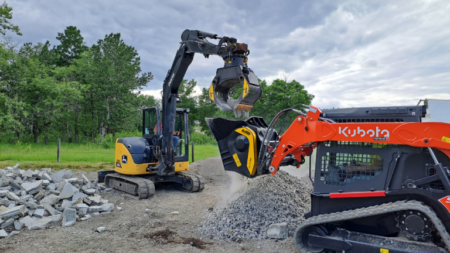Rendering courtesy of the city of Boston
Artistic depiction of design changes. Not drawn to scale.
The city of Boston Streets Cabinet staff held a virtual public meeting Sept. 11 to discuss its upcoming Dartmouth Street Safety and Mobility Project, which includes plans for a proposed two-way, separated bike lane on Dartmouth Street between Copley Square and the Charles River Esplanade, as well as immediate, short-term changes at the intersection of Dartmouth and Stuart streets.
Boston planners intend to create what they call a “direct, low-stress bike connection” between the square and the esplanade in concert with a repaving of Dartmouth between Back Street and Commonwealth Avenue.
Some ramps in the project area will be rebuilt later this year while others will require engineering plans and therefore be rebuilt in a future construction season, explained Julia Campbell, the city’s deputy chief for infrastructure and design, in speaking with the Boston Sun.
There will be no reduction to the number of general traffic lanes on Dartmouth Street as a result of the project, which, Campbell said, also offers an opportunity to change signal timing to improve safety and efficiency.
Expected construction impacts will include a temporary reduction in travel lanes, as well as possible impacts to pedestrian access.
Additionally, “quick-build” work is set to get under way this fall at Dartmouth and Stuart streets, including adding new striping and installing flex-posts to narrow slip lanes in order to slow turning drivers. The crosswalk would also be reduced from the current length of 30 in. to 16 in.
Next year, more permanent changes will be implemented in the area of Dartmouth and Stuart streets, including repaving Stuart between Huntington Avenue and Dartmouth Street.
The Sun reported that Boston also will explore the effectiveness of narrowed slip lanes in 2025 and make any necessary adjustments, as well as look at adding a separated bike lane and adjusting signal timing, along with checking on the potential for slip-lane closures.
Meanwhile, National Grid intends to replace its gas mains beneath Back Bay streets in 2025, including one on Dartmouth Street between Commonwealth Avenue and Boylston Street. After the conclusion of that work, the city will repave Dartmouth Street between Commonwealth Avenue and Boylston Street and finish installing the bike lane.
Campbell noted that National Grid’s work will not delay the city’s plans for north of Commonwealth Avenue.
City Outlines Goals, Benefits of Project
Boston planners noted that the Dartmouth Street Safety and Mobility Project aims to:
- Put pedestrians first. Safer pedestrian crossings will support a walkable, thriving, mixed residential and commercial district. Rebuilt curb ramps also will support accessibility.
- Be responsive to community feedback while advancing citywide goals to create a connected, low-stress bicycle network. A two-way separated bike lane between Copley Square and the Esplanade will serve residents, commuters, shoppers, and visitors.
- Keep vehicle traffic moving safely.
- Maintain and manage curbside access and parking as much as possible while creating a safer street.
In answer to how the effort is designed to benefit pedestrians, the city noted that it will:
- Rebuild curb ramps to be accessible.
- Narrow travel lanes to encourage slower driving speeds and make crossing distances shorter.
- Give bicyclists their own designated space on the road and encourage less riding on the sidewalk.
- Make crosswalks smoother by repaving road surfaces.
Dartmouth Street Key Access Route to Esplanade
On its project website, the Boston transportation department noted that Dartmouth Street provides direct access to the Charles River Esplanade, one of the region’s marquee parklands. However, city officials felt that the street needed a better, more direct connection to the park, popular with residents, commuters, and visitors alike due to its miles of shared use paths.
“Our project will create a two-way separated bike lane between the Dartmouth Street footbridge and the separated bike lane on Boylston Street. By giving bicyclists their own designated space on the road, we can discourage sidewalk riding.”
Boston considers the project to be part of “a bold plan” for transforming the city’s streets to better serve people walking, rolling, and riding bikes. Over the next three years, it wants to expand its bike network so that 50 percent of residents will only be a three-minute walk from a safe and connected bike route.
Safer Intersection at Dartmouth, Stuart Also Needed
At the doorstep of Back Bay Station and Copley Place, the intersection of Dartmouth and Stuart is a vital hub for pedestrians but has a long history of crashes. To improve its safety, the city said it is “focusing on the west side where wide turning lanes allow drivers to make high-speed turns. By narrowing these lanes with quick-build materials, we can shorten crossing distances for pedestrians and increase safety.
This component of the overall project coincides with the planned repaving of Stuart Street between Huntington Avenue and Dartmouth Street. Its timing allows Boston to introduce near-term safety measures while it continues to explore more comprehensive long-term changes for the intersection.
The Dartmouth Street Safety and Mobility Project was informed by Go Boston 2030, a citywide transportation plan, which identified Dartmouth Street as a possible location for a bike corridor. The plan also progressed due to community feedback solicited at last year’s Berkeley Street Better Bike Lane project, which also pointed to Dartmouth Street as a potential location for a bike lane.
State Rep. Jay Livingstone, D-8th Suffolk District, who was on hand for the Sept. 11 meeting, agreed with the findings, and afterward commented, “I personally think Dartmouth Street is a much safer path for bicyclists and pedestrians.”
Despite an imminent start date, Campbell noted that the city is still listening to community feedback on the project.
“It’s not a done deal — that’s why we’re having this conversation,” she said.
Read the full article here











